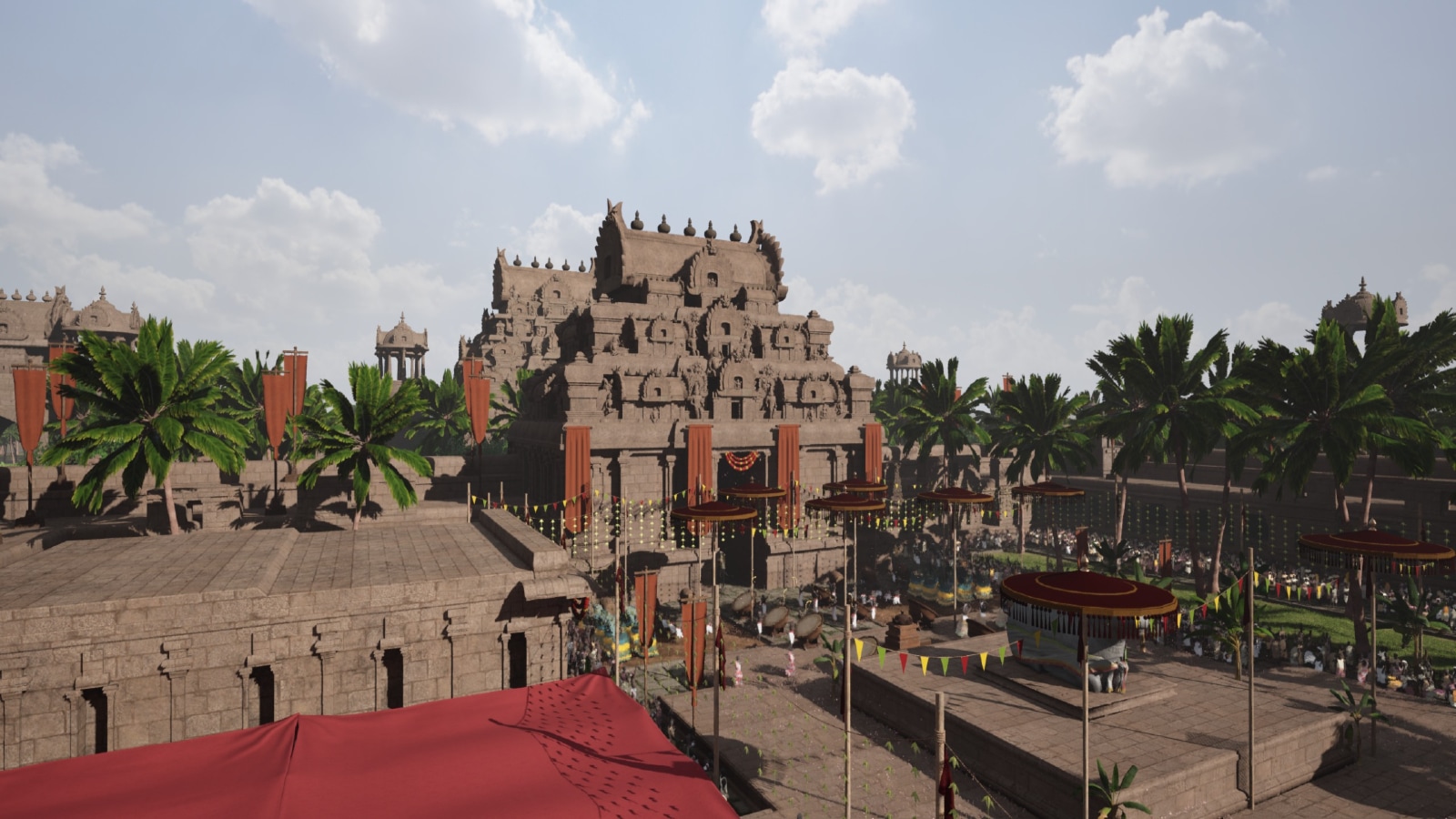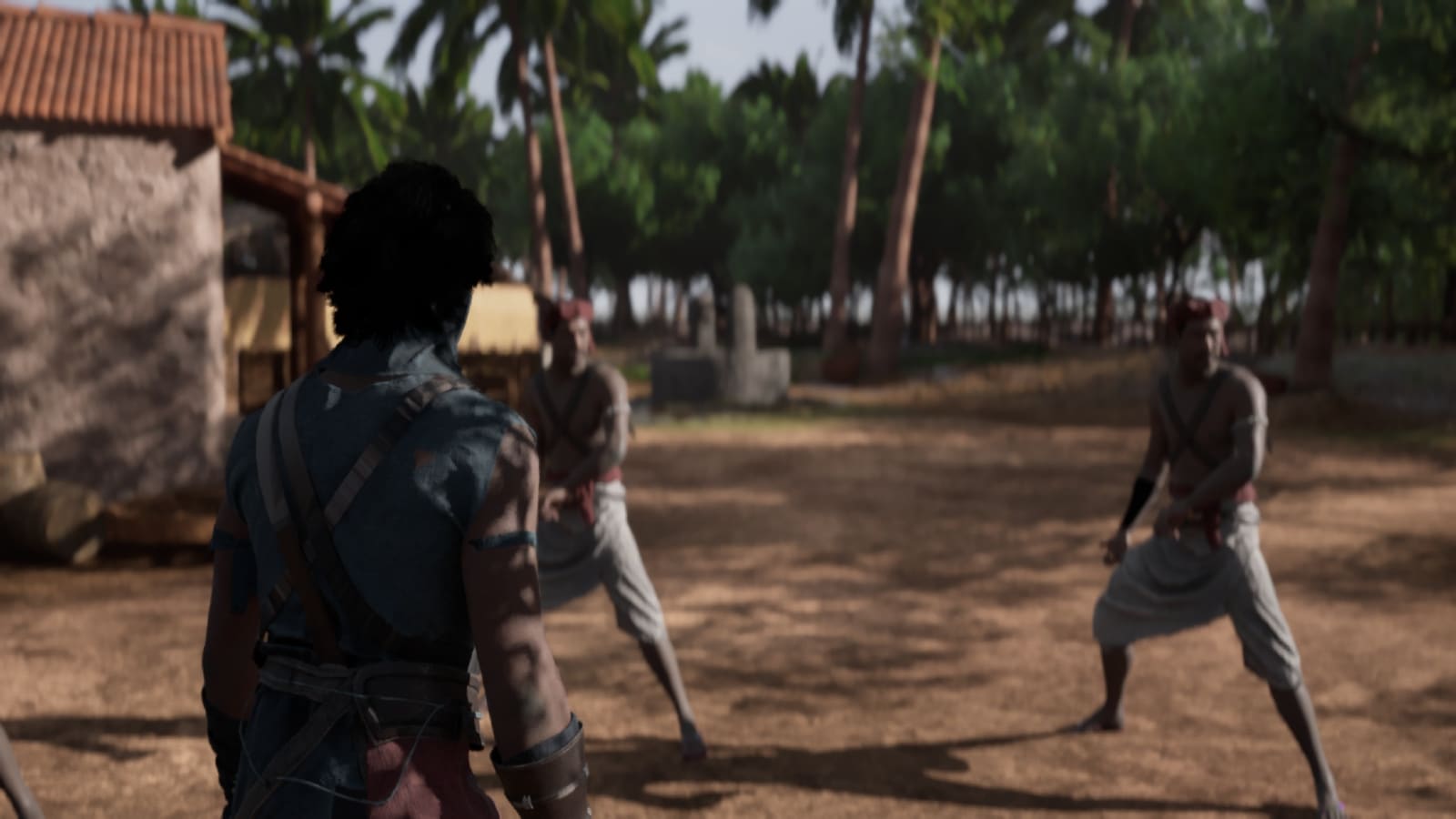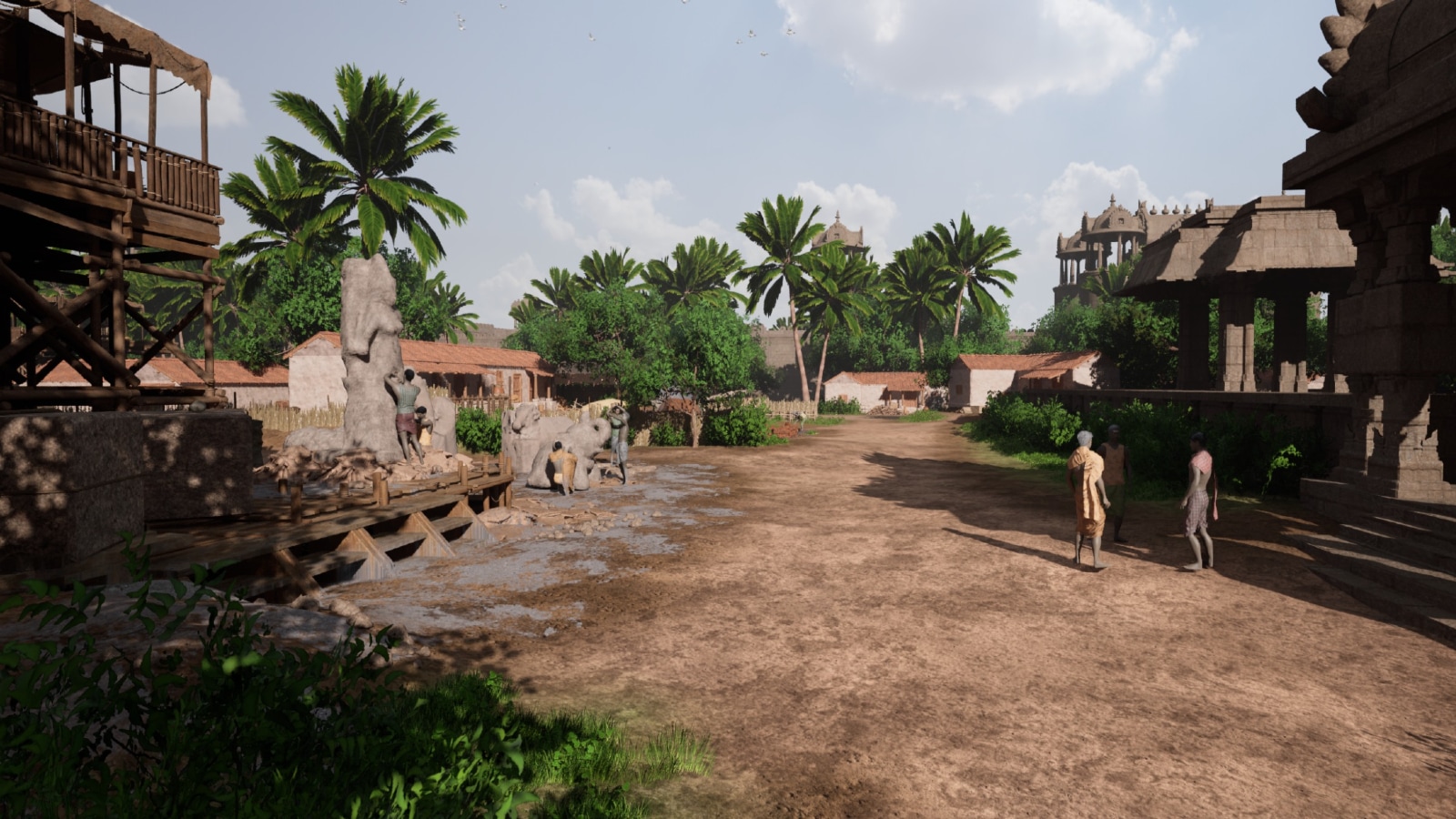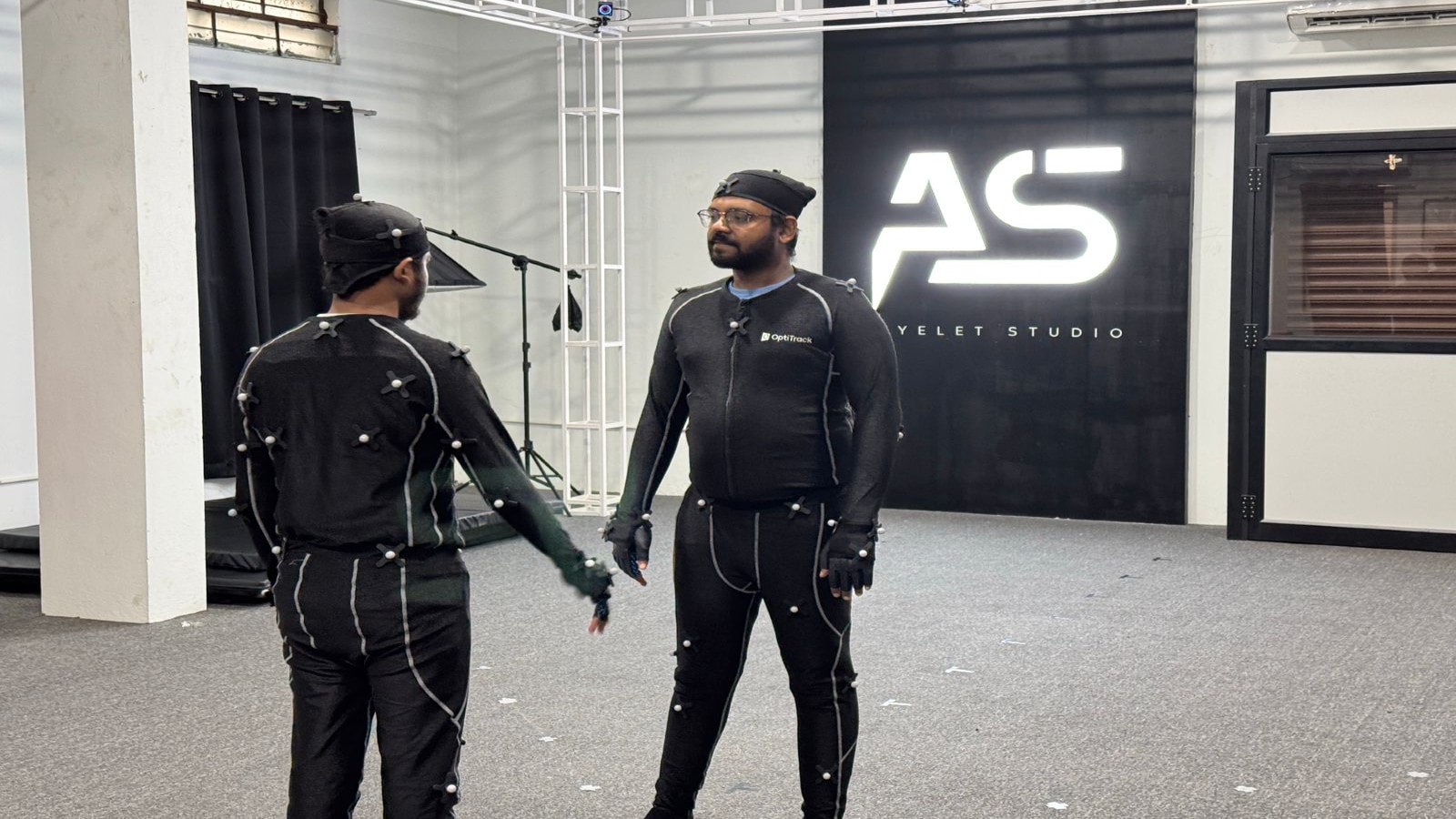“Rajendra Chola achieved much more than his father, the great Rajaraja Chola, yet very few people are aware of his accomplishments. From conquering Srivijaya, in present-day Indonesia, the island of Sri Lanka to leading expeditions to the Ganges River in northern India, he was a truly fascinating king. That’s why we chose Rajendra over other kings in the Chola dynasty,” says Abraham K, Studio Head and Creative Director of Chennai-based Ayelet Studio, which is developing the Unsung Empires: The Cholas II: Legacy of Rajendra Chola.
The Chola dynasty, which Rajendra Chola belonged to, ruled parts of southern India from the 10th to 13th centuries. The Chola kings were pioneers in naval warfare and carried several waterborne battles, conquering territories across South India, and expanding their reach into several parts of the Malay Peninsula.
“One of Rajendra Chola’s key traits is that, from childhood, he was raised to be a king. He was the strategic and powerful one, and he was brought up with that in mind,” Abraham tells indianexpress.com, revealing what gamers can expect from the game, where all the combat and strategy revolve around this aspect of his character.
Abraham says while the game’s theme is rooted in history, the gameplay storyline is fictional. He chose this approach partly to present his perspective on Rajendra Chola. “I wanted to ensure we picked a topic that didn’t touch on religious or mythological themes. I wanted to focus on the historical aspects, like what we learned in childhood about the Cholas’ many expeditions and the stories surrounding them.”
He added the goal was to build games around different kings and their kingdoms, with the Cholas being the first of many stories they wanted to tell.
In the video game, Abraham focuses on the period when the Cholas launched an expedition to Srivijaya, present-day Indonesia, which is where the story begins. The prologue covers Rajendra Chola’s conquest of Srivijaya and his victory there, and the second part of the game, which Abraham and his team are currently working on, centres on Rajendra Chola’s return to his kingdom after securing the Srivijaya empire and where the main story unfolds.
The video game is currently in development and expected to hit the market sometime in the middle of next year. Abraham has completed 70 per cent of the game and plans to showcase a gameplay trailer at the India Game Developer Conference (IGDC) in Hyderabad. To gauge interest and get a sense of gamer excitement, Abraham released a prologue of the game as a technical demo earlier this year, which garnered 83,000 downloads.
Story continues below this ad
 The Unsung Empires: The Cholas II: Legacy of Rajendra Chola is an open-world game with an emphasis on action. (Image credit: Ayelet Studio)
The Unsung Empires: The Cholas II: Legacy of Rajendra Chola is an open-world game with an emphasis on action. (Image credit: Ayelet Studio)
A mix of emotions and action
The game is divided into 10 chapters, capturing Rajendra Chola’s journey, starting from a flashback sequence where the king returns to his childhood, allowing the player to experience his character at a young age. “It’s more of an entire journey, and each chapter has a set piece around which the story revolves.”
Abraham says he didn’t want to limit Rajendra Chola to just being a warrior. While action is central to the game, he also aimed to portray the king as a person. “It’s a bit emotional as well and heavily action-driven. It’s more of a personal journey for everyone. The game has all the ups and downs leading to a climax,” he says, adding they wanted to show Rajendra Chola prioritising his people over conquest. He says the first chapter includes a song sequence that celebrates a significant moment. One of the chapters features a sequence from Jallikattu, a traditional bull-taming sport held in Tamil Nadu during the Pongal harvest festival.
To recreate the Chola era, Abraham and his team studied South Indian inscriptions and read books such as Udaiyar by Balakumaran, The Cholas by K A Nilakanta Sastri, Gangai Konda Cholan by Balakumaran, and Brhadisvara Temple: Form and Meaning by R Nagaswamy. They also watched movies like Raja Raja Cholan, Ponniyin Selvan, and Yaathisai.
Abraham also consulted many people in and around Thanjavur. Drawing on insights from poetry and local lore, the team then recreated the historical world in their set designs, working with architects who helped design the houses and recreate the unique motifs on each structure. The team recreated the entire city of Thanjavur, capturing the aesthetics of the 11th century. Abraham notes that significant research and time were also dedicated to creating clothing and costumes for each character in the game. For this, the team collaborated with a fashion designer who created garments for the king, incorporating specific colours and designs to ensure historical accuracy.
Story continues below this ad
 Abraham said he was heavily inspired by games from the Assassin’s Creed franchise, known for its distinctive play style and immersive world-building. (Image credit: Ayelet Studio)
Abraham said he was heavily inspired by games from the Assassin’s Creed franchise, known for its distinctive play style and immersive world-building. (Image credit: Ayelet Studio)
Channelling Kalaripayattu
The Unsung Empires: The Cholas II Legacy of Rajendra Chola is an open-world game with an emphasis on action. Abraham said he was heavily inspired by games from the Assassin’s Creed franchise, known for its distinctive play style and immersive world-building. However, he incorporated a unique combat style from southern India, called Kalaripayattu — an amalgamation of two words: kalari or training ground and payattu which means training in martial arts. This style was used to design action set pieces and showcase authentic combat techniques.
“When we started, we explored this unique combat style originating from southern India, which was used by many kings of that era. It involves three main weapons: the sword and shield, the dagger, and the urumi, also known as the sural vaal, a flexible, coiling sword. The urumi is especially unique to this region. In fact, I don’t think there are any games in the industry right now that feature a weapon like the urumi — a sword capable of killing with incredible precision and style,” he explains.
“The combat mechanics are completely different, from the sword fights to the posture… We recorded over a thousand animations just to recreate the Kalaripayattu. So, whether you’re walking, taking a stance, or fighting, everything aligns with the intended colour scheme,” he says, adding that considerable thought went into making the game as internationally appealing as possible.
For the gameplay mechanics, Abraham and the team created a system called DAS, which is a dynamic architecture. The player can play as more than 40 characters, each with four different combat types, offering an entirely new fighting style in an open-world game.
Story continues below this ad
The background music has also played an important role in creating the right immersion in the game. The music is composed by Chandar Karunakaran. Abraham has also worked with Kosai Nagaran, a Chennai-based troupe that specialises in playing and preserving centuries-old traditional instruments, along with Madhan Karky, a popular lyricist known for writing dialogues for Baahubali: The Beginning (2015) and Baahubali 2: The Conclusion (2017), and Antony Dassan for a song. The game features three songs, says Abraham.
 The game is over 40 hours, with 8 hours dedicated to completing the main story. (Image credit: Ayelet Studio)
The game is over 40 hours, with 8 hours dedicated to completing the main story. (Image credit: Ayelet Studio)
18 main characters, over 200 characters and 8,000 props
Making a period game isn’t as easy as it may seem and comes with its set of challenges. “It’s really hard to recreate. There are a few things you can visit, like temples that are still standing. But getting the right concepts, even imagining certain things, is a huge task. You don’t have many references to work with,” he explains.
The game is over 40 hours, with 8 hours dedicated to completing the main story. Like a mainstream movie presented on a grand scale with hundreds of characters, this game features 18 main characters and more than 200 characters.
Abraham and the team have created 8,000 props, ranging from small cups and mugs to dolls. “We had to create everything from scratch, and you won’t be able to find all these things on the internet,” he says, adding that planning it with a small team can be a huge task. “We don’t have the luxury of having thousands of developers to plan and execute, so we try to make the most of the resources, time, and money we have. Those factors come into play, and we try to optimise them as best as we can.”
Story continues below this ad
Abraham, 30, has no expertise in game development or formal training in designing games — he was a solution architect before starting Ayelet Studio in 2022. However, he has always been a gamer and enjoys playing narrative-based games. Abraham said it took him six to seven months just to learn and understand how game development works while also working on the studio’s debut game.
He now leads a team of 25 people and juggles many roles himself, from programming and working on creating the environment to setting up the entire DevOps pipeline. “I have tried to implement the methodology from mobile app development and incorporate it into the studio, and that really helped us get the game out as fast as we could.”
Abraham said the game is being developed for Microsoft’s Xbox, Sony’s PlayStation 5, and PC. However, the game will first released on consoles followed by the PC.
 The combat mechanics are completely different, says Abraham. (Image credit: Ayelet Studio)
The combat mechanics are completely different, says Abraham. (Image credit: Ayelet Studio)
‘People expect quality’
Abraham said he always intended to make Unsung Empires: The Cholas II: Legacy of Rajendra Chola a global game, targeting Western audiences and the Indian diaspora.
Story continues below this ad
India has a huge gaming base; however, it’s rare for an Indian studio to break into the international scene and make a mark in the Western market. “I think one thing is the quality. Whenever people play the game from an Indian studio, they compare it with the industry standard. From day one, we knew our 3D action game would be compared to titles like Assassin’s Creed. It doesn’t matter whether you’re developing with a 20-member team or a 20,000-member team — at the end of the day, people are buying it, and they expect quality. I think that’s going to be the huge challenge we need to address.”
Although game development in India has been on the upswing, Abraham agrees that India has yet to create a game with global appeal, which is why Indian developers don’t receive the same budgets to make AAA games as their Western counterparts.
 Abraham (extreme left) alongside the audio chorus team. (Image credit: Ayelet Studio)
Abraham (extreme left) alongside the audio chorus team. (Image credit: Ayelet Studio)
“It’s more about the scale and the level of risk people are willing to take. I don’t think anyone is ready to invest $50 million. We also don’t have a title that has performed well enough to change the entire industry,” he says, addressing the current state of game development in India.
His studio is currently bootstrapped, funded by his money and from a friend. The budget to make Unsung Empires: The Cholas II: Legacy of Rajendra Chola may hover at $2 million, and Abraham is talking to a few publishers to get funding for the project.
Story continues below this ad
Although the game is still months away from release, Abraham said he plans to price it as an indie game, between $25 and $35. For the Indian market, the game may be priced locally at around Rs 1,000 or slightly above that.
Abraham calls S S Rajamouli his role model and wants to show him the game before anyone else plays it. “Rajamouli creates memorable experiences. I look up to him. I admire how he sets the template and the set pieces in his movies,” he says.



 To recreate the Chola era, Abraham and his team studied South Indian inscriptions and read books. (Image credit: Ayelet Studio)
To recreate the Chola era, Abraham and his team studied South Indian inscriptions and read books. (Image credit: Ayelet Studio) The Unsung Empires: The Cholas II: Legacy of Rajendra Chola is an open-world game with an emphasis on action. (Image credit: Ayelet Studio)
The Unsung Empires: The Cholas II: Legacy of Rajendra Chola is an open-world game with an emphasis on action. (Image credit: Ayelet Studio) Abraham said he was heavily inspired by games from the Assassin’s Creed franchise, known for its distinctive play style and immersive world-building. (Image credit: Ayelet Studio)
Abraham said he was heavily inspired by games from the Assassin’s Creed franchise, known for its distinctive play style and immersive world-building. (Image credit: Ayelet Studio) The game is over 40 hours, with 8 hours dedicated to completing the main story. (Image credit: Ayelet Studio)
The game is over 40 hours, with 8 hours dedicated to completing the main story. (Image credit: Ayelet Studio) The combat mechanics are completely different, says Abraham. (Image credit: Ayelet Studio)
The combat mechanics are completely different, says Abraham. (Image credit: Ayelet Studio) Abraham (extreme left) alongside the audio chorus team. (Image credit: Ayelet Studio)
Abraham (extreme left) alongside the audio chorus team. (Image credit: Ayelet Studio)





